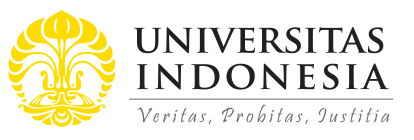
Abstract
Noise pollution can be categorized as a danger in silence. In school, noise pollution inhibits the focus of learning, impairs learning and cognitive development, for example, students' skills to think and understand both oral and written comprehension may be hampered by noise. Many schools in Malaysia experience excessive noise pollution as their locations are very near busy roads. This will be one factor that hinders the implementation of the education system in producing holistic students in order to prepare for the 4IR era. Knowing the importance of this problem, a group of researchers from UTM GREENPrompt, School of Civil Engineering, Universiti Teknologi Malaysia together with industry partners have built a special class called 'Serene Classroom' through a community project to overcome this problem. A classroom on the second floor of Sekolah Kebangsaan Kampong Pasir, Johor Bahru that has traffic noise exposure from the Skudai-Johor Bahru highway was selected for this purpose. The community project is in collaboration with the Johor State Education Department, Ministry of Education Malaysia and industrial partners, such as Vibrant Echo Company, Sanjung Sempurna Sdn. Bhd. and DZAZ Collection. The implementation of the project, the lessons learned from the project and challenges for the implementation are discussed. Technically, Serene classrooms significantly reduce the level of noise pollution for more conducive learning and have received better perceptions from students and teachers. Therefore, hopefully more ‘Serene Classroom’ community projects can be implemented in schools, especially in urban areas affected by high noise levels as a way to reduce the renovation costs on schools.
References
Aguilar, J. R. (2019). A review of acoustic design criteria for school infrastructure in Chile. Revista Ingenieria de Construccion, 34(2). https://doi.org/10.4067/S0718-50732019000200115
Ariani, M. G., & Mirdad, F. (2015). The Effect of School Design on Student Performance. International Education Studies, 9(1), 176–181. https://doi.org/10.5539/ies.v9n1p175
Berglund, B., Lindvall, T., & Schwela, D. H. (1999). Guidelines of Community Noise. World Health Organisation.
Bhang, S. Y., Yoon, J., Sung, J., Yoo, C., Sim, C., Lee, C., Lee, J., & Lee, J. (2018). Comparing attention and cognitive function in school children across noise conditions: A quasi-experimental study. Psychiatry Investigation, 15(6).
https://doi.org/10.30773/pi.2018.01.15
Bulunuz, N., Bulunuz, M., Orbak, A. Y., Mulu, N., & Tavşanli, Ö. F. (2017). An evaluation of primary school students’ views about noise levels in school. International Electronic Journal of Elementary Education, 9(4), 725–740.
https://www.iejee.com/index.php/IEJEE/article/view/281
Chan, K. M. K., Li, C. M., Ma, E. P. M., Yiu, E. M. L., & McPherson, B. (2015). Noise levels in an urban Asian school environment. Noise and Health, 17(74), 48–55. https://doi.org/10.4103/1463-1741.149580
Cheryan, S., Ziegler, S. A., Plaut, V. C., & Meltzoff, A. N. (2014). Designing Classrooms to Maximize Student Achievement. Policy Insights from the Behavioral and Brain Sciences. https://doi.org/10.1177/2372732214548677
Clark, C., & Paunovic, K. (2018). WHO environmental noise guidelines for the European region: A systematic review on environmental noise and cognition. International Journal of Environmental Research and Public Health, 15(2).
https://doi.org/10.3390/ijerph15020285
Department for Education. (2015). Acoustic design of schools - performance standards. Building Bulletin.
Dreossi, R. C. F., & Momensohn-Santos, T. (2005). Noise and its interference over students in a classroom environment: literature review. In Pró-fono: revista de atualização científica. https://doi.org/10.1590/s0104-56872005000200014
Haron, Z., Darus, N., Yahya, K., Halim, H., Naadia Mazlan, A., Azril Hezmi, M., & Jahya, Z. (2019). Review on Traffic Noise Problem in Malaysia. IOP Conference Series: Earth and Environmental Science. https://doi.org/10.1088/1755-1315/220/1/012015
Ismail, M., Abdullah, S., & Yuen, F. S. (2015). Study on environmental noise pollution at three different primary schools in Kuala Terengganu, Terengganu State. Journal of Sustainability Science and Management, 10(2), 103–111. https://jssm.umt.edu.my/wp-content/uploads/sites/51/2015/12/11w.pdf
Kahkashan, A., & Shivakumar, V. (2015). Effects of traffic noise around schools on attention and memory in primary school children. International Journal of Clinical and Experimental Physiology, 2(3). https://doi.org/10.4103/2348-8093.169963
Kang, J. (2017). From dBA to soundscape indices: Managing our sound environment. Frontiers of Engineering Management, 4(2). https://doi.org/10.15302/j-fem-2017026
Knauert, M., Jeon, S., Murphy, T. E., Yaggi, H. K., Pisani, M. A., & Redeker, N. S. (2016). Comparing average levels and peak occurrence of overnight sound in the medical intensive care unit on A-weighted and C-weighted decibel scales. Journal of Critical Care, 36. https://doi.org/10.1016/j.jcrc.2016.06.005
Minichilli, F., Gorini, F., Ascari, E., Bianchi, F., Coi, A., Fredianelli, L., Licitra, G., Manzoli, F., Mezzasalma, L., & Cori, L. (2018). Annoyance judgment and measurements of environmental noise: A focus on Italian secondary schools. International Journal of Environmental Research and Public Health, 15(2).
https://doi.org/10.3390/ijerph15020208
Montiel, I., Mayoral, A. M., Pedreño, J. N., & Maiques, S. (2019). Acoustic comfort in learning spaces: Moving towards sustainable development goals. Sustainability, 11(13), 3573. https://doi.org/10.3390/su11133573
Pinho, P. G., Pinto, M., Almeida, R. M. S. F., Lopes, S. M., & Lemos, L. T. (2016). Aspects concerning the acoustical performance of school buildings in Portugal. Applied Acoustics, 106, 129–134. https://doi.org/10.1016/j.apacoust.2016.01.002
Saip, N. A. M., Halim, H., Salleh, A. H., Amiruddin, A. Z., & Ibrahim, Z. (2020). Road Traffic Noise Assessment at Sekolah Kebangsaan Sungai Bakap, Sungai Bakap, Penang, Malaysia. In Lecture Notes in Civil Engineering. https://doi.org/10.1007/978-3-030-32816-0_97
Sala, E., & Rantala, L. (2016). Acoustics and activity noise in school classrooms in Finland. Applied Acoustics, 114, 252–259. https://doi.org/10.1016/j.apacoust.2016.08.009
Sarbu, I., & Sebarchievici, C. (2013). Aspects of indoor environmental quality assessment in buildings. Energy and Buildings, 60, 410–419).
https://doi.org/10.1016/j.enbuild.2013.02.005
Segaran, V. C. (2019). Assessment of traffic noise pollutions outside school, residential, hospital and commercial areas along Jalan Kluang, Batu Pahat, Johor. International Journal of Integrated Engineering, 11(9), 123–131.
https://publisher.uthm.edu.my/ojs/index.php/ijie/article/view/5438
Shield, B., Conetta, R., Dockrell, J., Connolly, D., Cox, T., & Mydlarz, C. (2015). A survey of acoustic conditions and noise levels in secondary school classrooms in England. The Journal of the Acoustical Society of America, 137(1). https://doi.org/10.1121/1.4904528
Shield, B. M., & Dockrell, J. E. (2003). The effects of noise on children at school: A review. Building Acoustics, 10(2), 97–116). https://doi.org/10.1260/135101003768965960
Silva, L. T., Oliveira, I. S., & Silva, J. F. (2016). The impact of urban noise on primary schools. Perceptive evaluation and objective assessment. Applied Acoustics, 106, 2–9. https://doi.org/10.1016/j.apacoust.2015.12.013
Skarlatos, D., & Manatakis, M. (2003). Effects of classroom noise on students and teachers in Greece. Perceptual and Motor Skills, 96(2). https://doi.org/10.2466/pms.2003.96.2.539
Tong, Y. G., Abu Bakar, H., Mohd Sari, K. A., Ewon, U., Labeni, M. N., & Fauzan, N. F. A. (2017). Effect of urban noise to the acoustical performance of the secondary school’s learning spaces-A case study in Batu Pahat. IOP Conference Series: Materials Science and Engineering. https://doi.org/10.1088/1757-899X/271/1/012029
Toyinbo, O., Shaughnessy, R., & Haverinen-Shaughnessy, U. (2018). Indoor Environmental Quality, Pupil’s Health and Academic Performance; A Summary of Studies from Finland, USA and Nigeria. Conference: Indoor Air 2018At: Philadelphia, PA, USA.
Wen, X., Lu, G., Lv, K., Jin, M., Shi, X., Lu, F., & Zhao, D. (2019). Impacts of traffic noise on roadside secondary schools in a prototype large Chinese city. Applied Acoustics, 151, 153–163. https://doi.org/10.1016/j.apacoust.2019.02.024
Woolner, P., & Hall, E. (2010). Noise in schools: A holistic approach to the issue. International Journal of Environmental Research and Public Health, 7(8).
https://doi.org/10.3390/ijerph7083255
Zannin, P. H. T., & Zwirtes, D. P. Z. (2009). Evaluation of the acoustic performance of classrooms in public schools. Applied Acoustics, 70(4). https://doi.org/10.1016/j.apacoust.2008.06.007
Zijlema, W. L., de Kluizenaar, Y., van Kamp, I., & Hartman, C. A. (2021). Associations between road traffic noise exposure at home and school and ADHD in school-aged children: the TRAILS study. European Child and Adolescent Psychiatry, 30(1). https://doi.org/10.1007/s00787-020-01521-8
Recommended Citation
Haron, Zaiton; Yahya, Khairulzan; Darus, Nadirah; Mohd Yussup, Rafidah; Awang, Abdullah Zawawi; Hussien, Norelyza; Mazlan, Ain Naadia; Zakaria, Rozana; Ismail, Mohammad; Amir Nizam, Noramera Nabila; A Kassim, Ahmad Syakir Farhan; Malek, Nur Syalyana; Rifki, Rifa Rafida; Kamaludin, Helmi; Yaakob, Syamsul Hafiz; Haron, Zaliza; and Sheikh Ahmad, Sheikh Izat Azhar
(2021).
‘Serene Classroom’ Minimizes Noise for More Conducive Learning.
ASEAN Journal of Community Engagement, 5(1), 154-182.
Available at: https://doi.org/10.7454/ajce.v5i1.1122
Included in
Civil Engineering Commons, Construction Engineering and Management Commons, Environmental Engineering Commons







